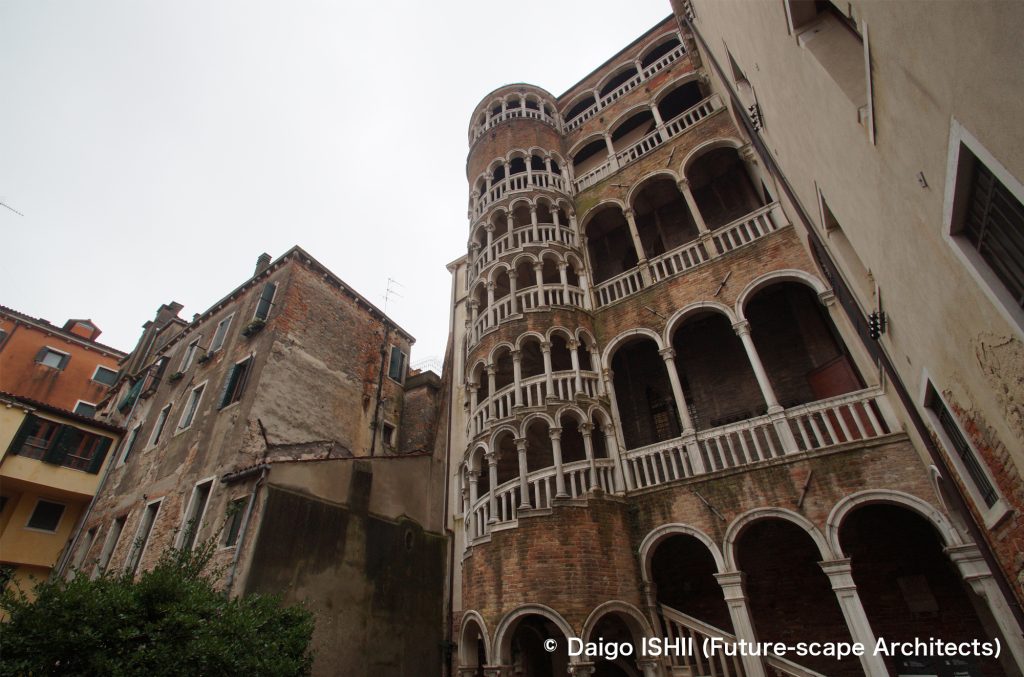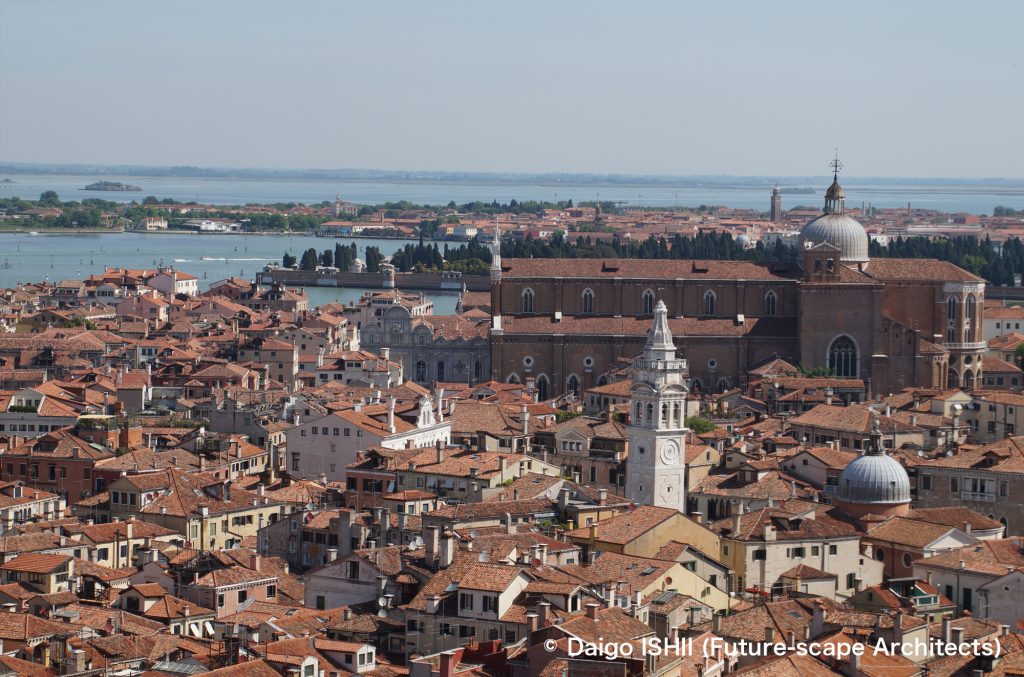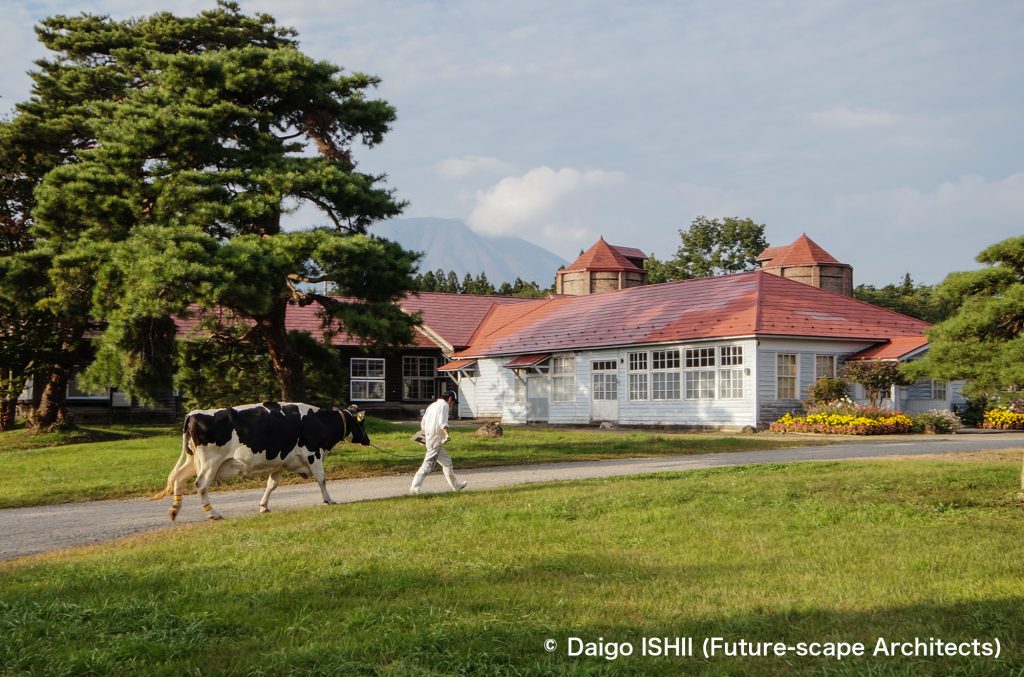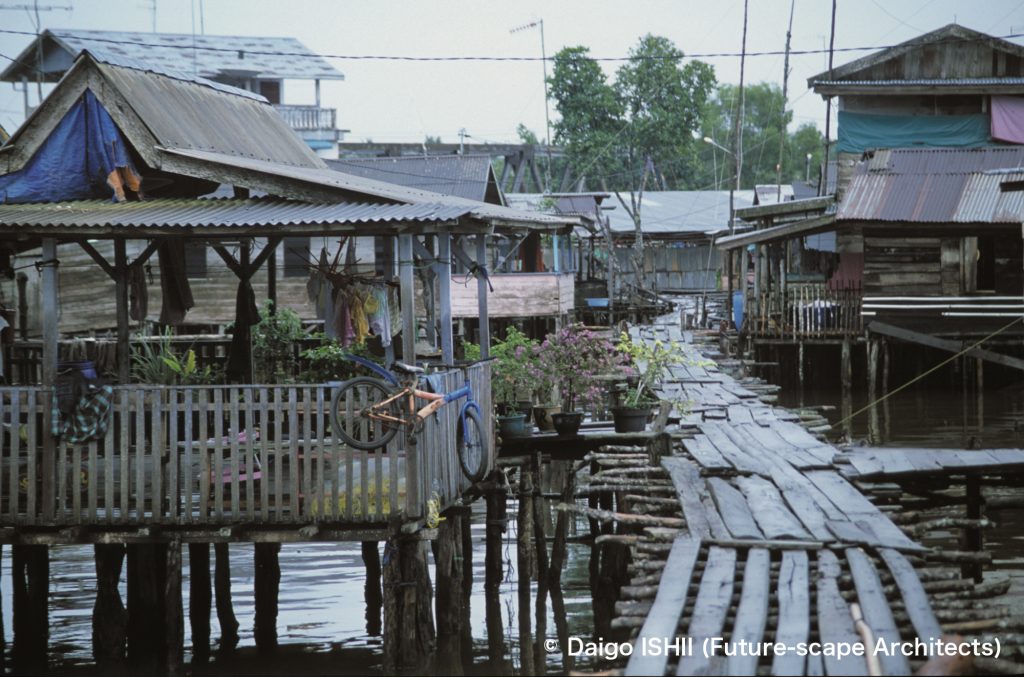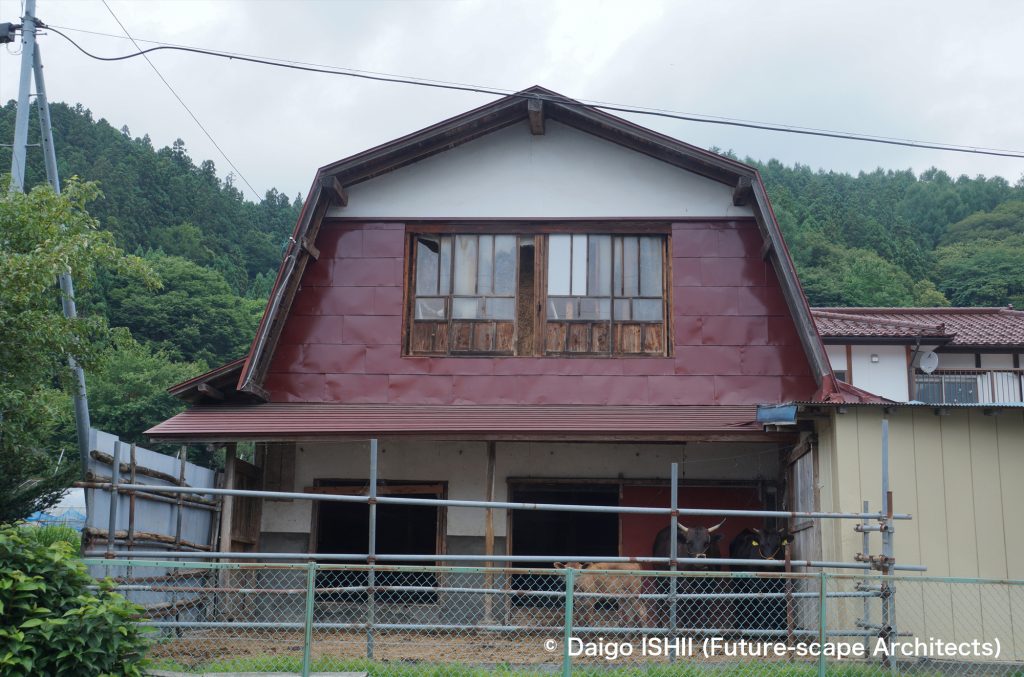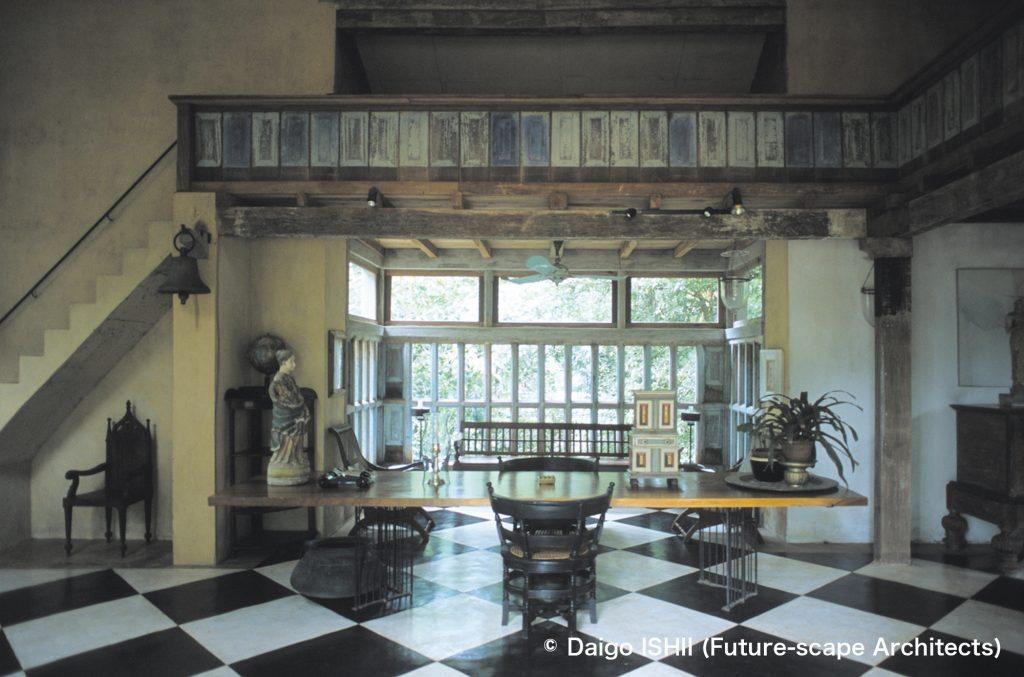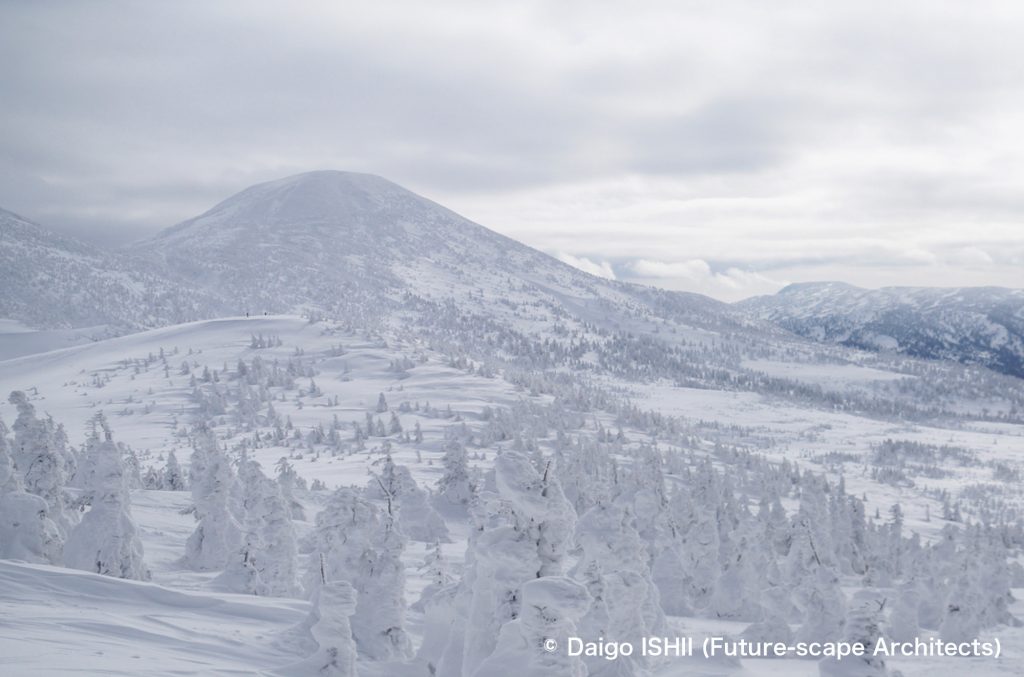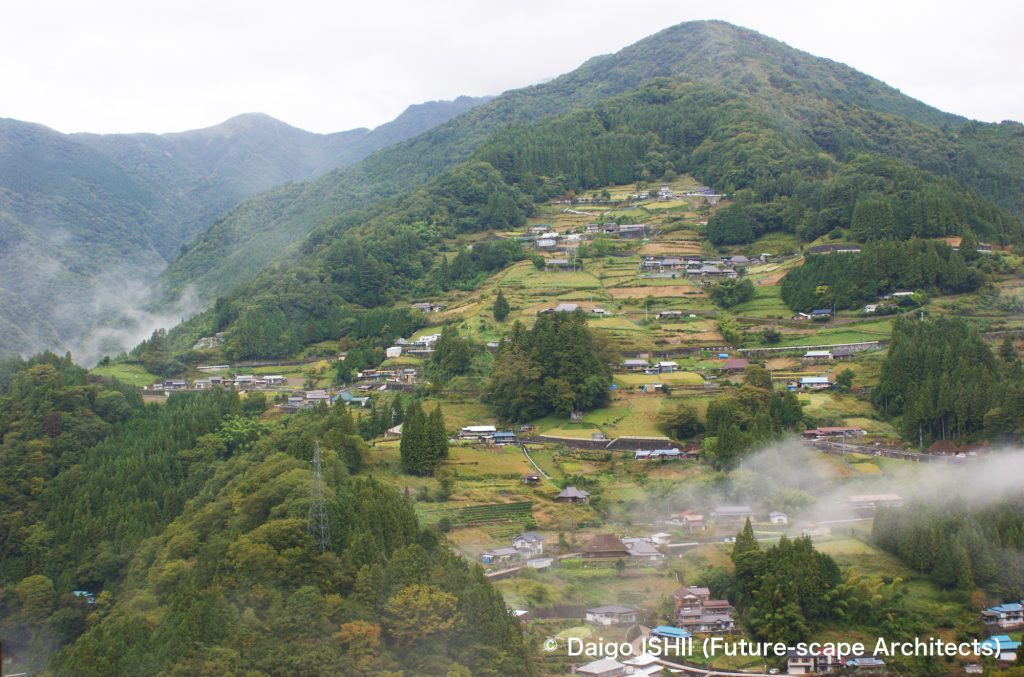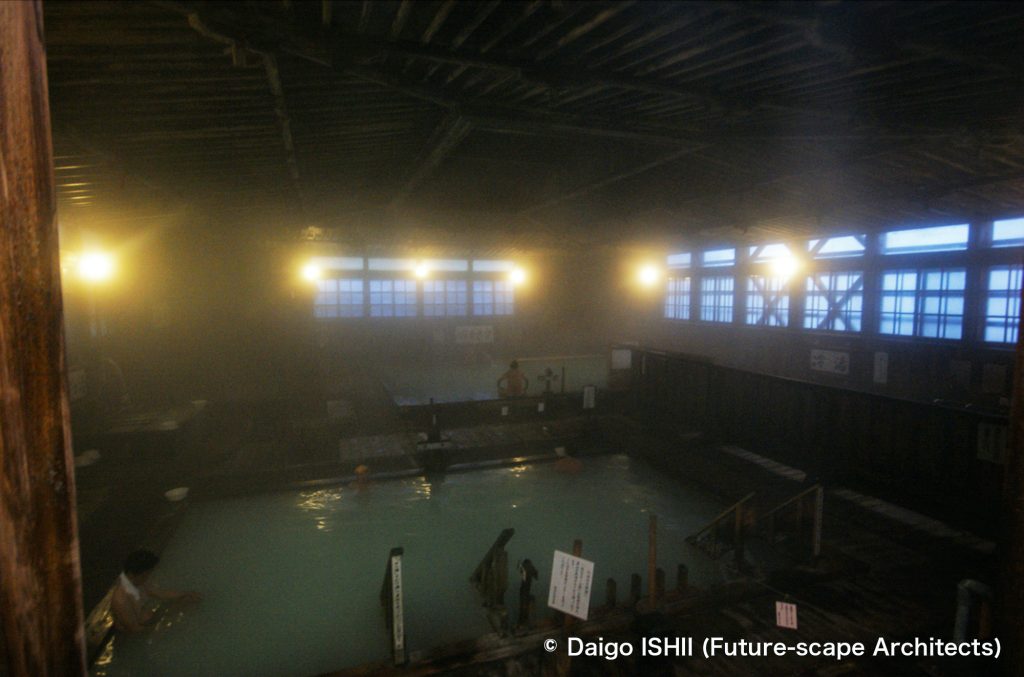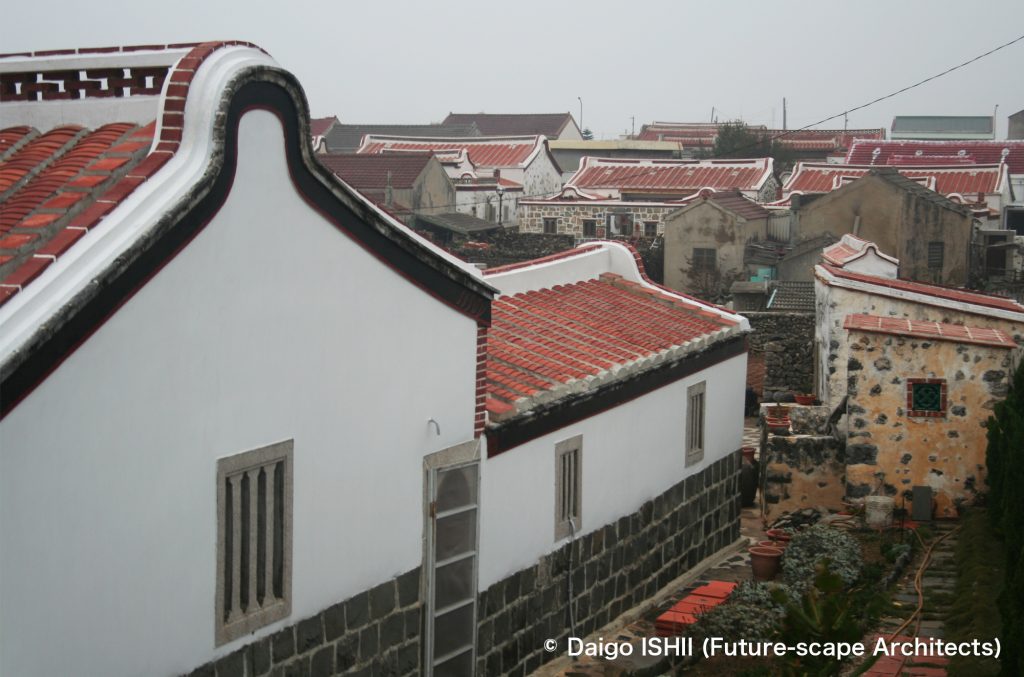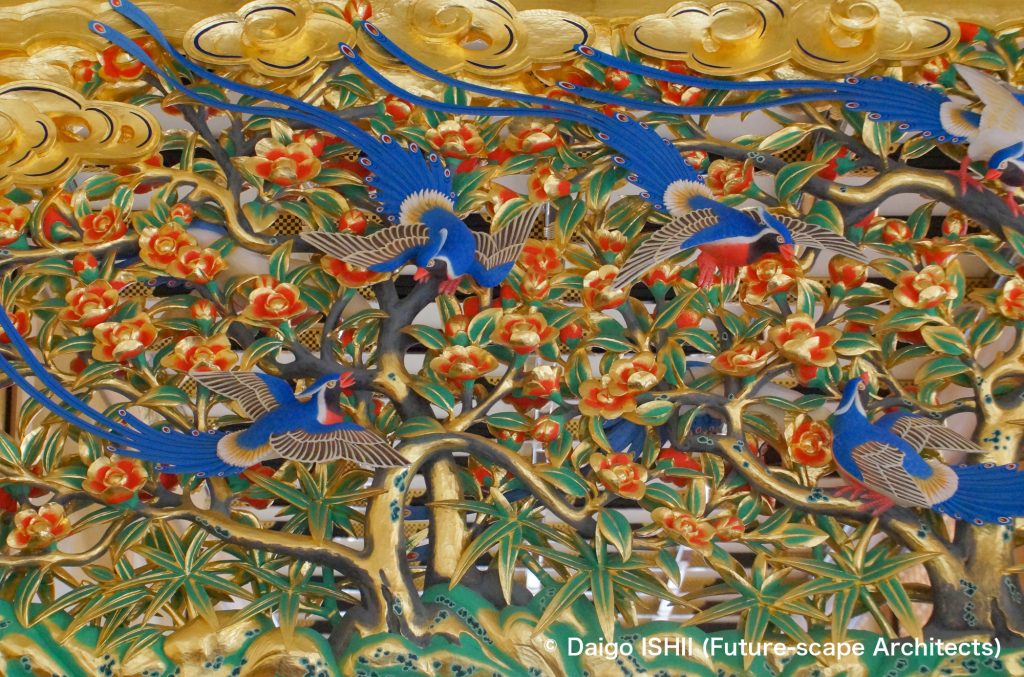I found wells in Venetian squares. It is an elegant object of marble carved into a water bowl form. At first, it seemed to be the proof of the maturity of Venetian culture at the high level of design. But, gradually, I wondered if it was possible to collect freshwater even though it was a city built on the sea.
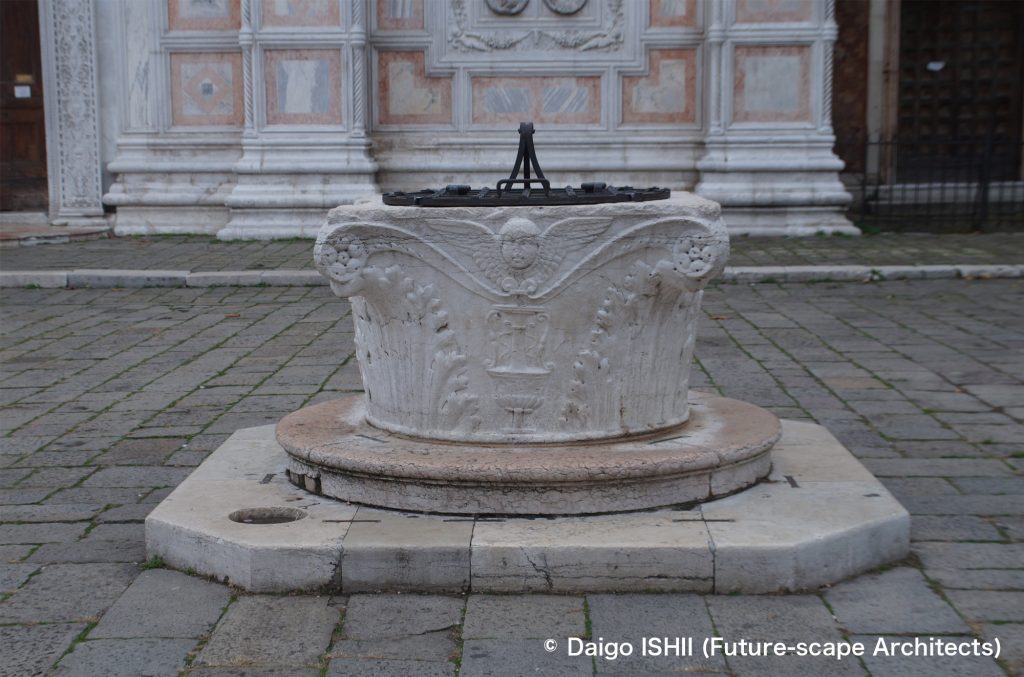
https://goo.gl/maps/QHJJALS8tEFuBJxM8
This well was a creative device generated by its disadvantageous location that was on the sea.
As for the mechanism, first of all, a hole 6 meters deep was dug under the square, then the bottom was blancketed with clay to build an impermeable layer. Above the clay, sand was filled to the ground to create a layer to filter water, and the surface was covered with stone pavement. The rain that fell on the plaza flew over the pavement and entered the sand layer from the catchment basin to filter and store. Filtered water seeped out to the central well, which reached the bottom of the sand, and they pumped up to use as drinking water.
In the middle of the 19th century, 7,000 wells existed for the population of about 150,000. So it was an indispensable mechanism to support a city. Besides, changing the shape of plazas affected the well, so it was prohibited to change the wall line of the building. The wells controlled cityscape.
In today's Venezia, it is a cultural relic but looks suggestive. I noticed that, instead of huge dams in the mountains or rainwater storage facilities like an underground temple, we might be able to turn city squares and roads into huge reservoirs in a sustainable way like Venezia.
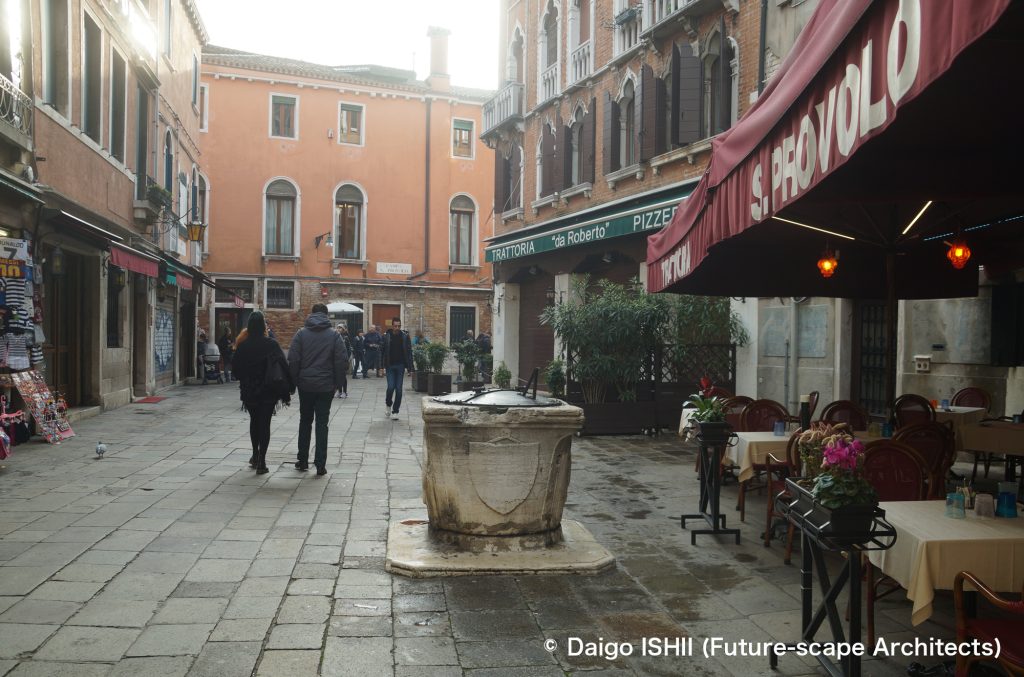
https://goo.gl/maps/bgA8d19s7UniEYEq9
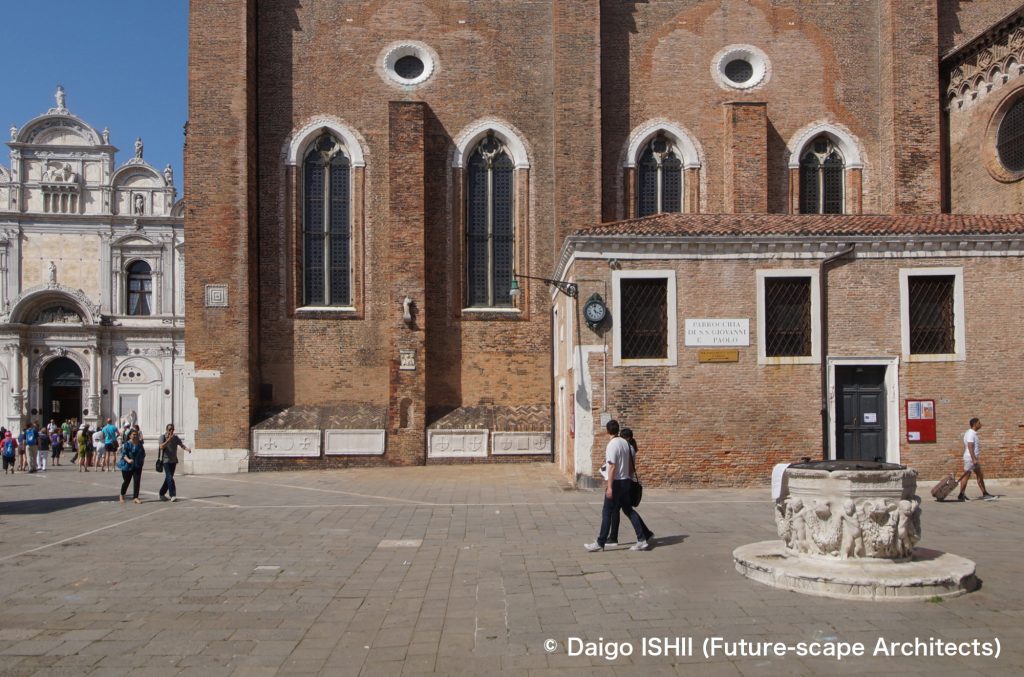
https://goo.gl/maps/K8pkSppbom5RtWVcA
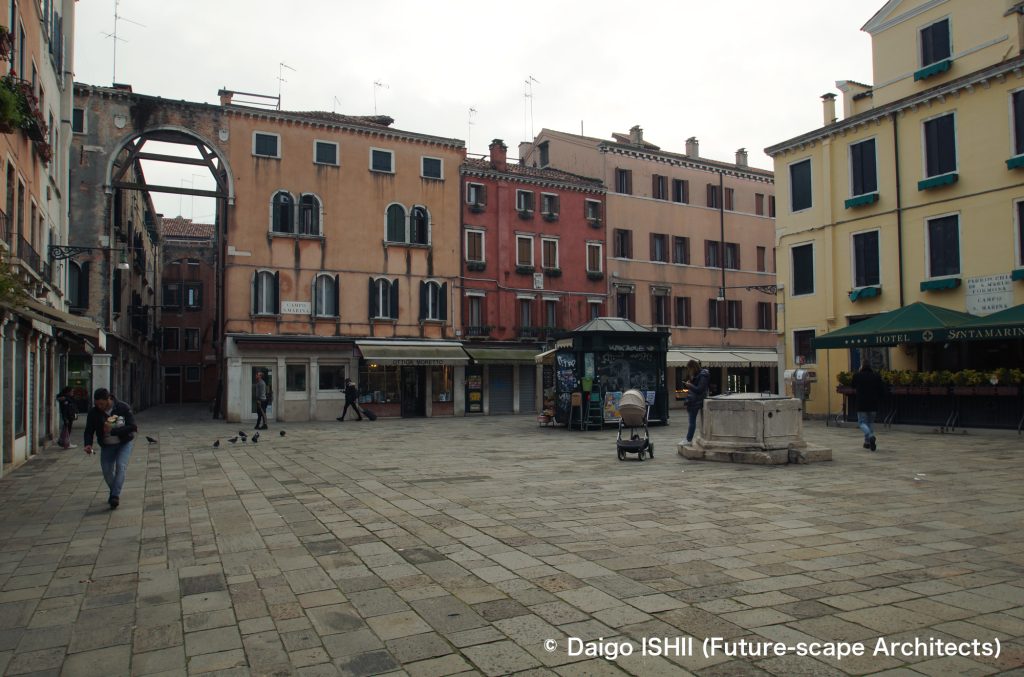
https://goo.gl/maps/9ffEmhkNfqWTq2zw8
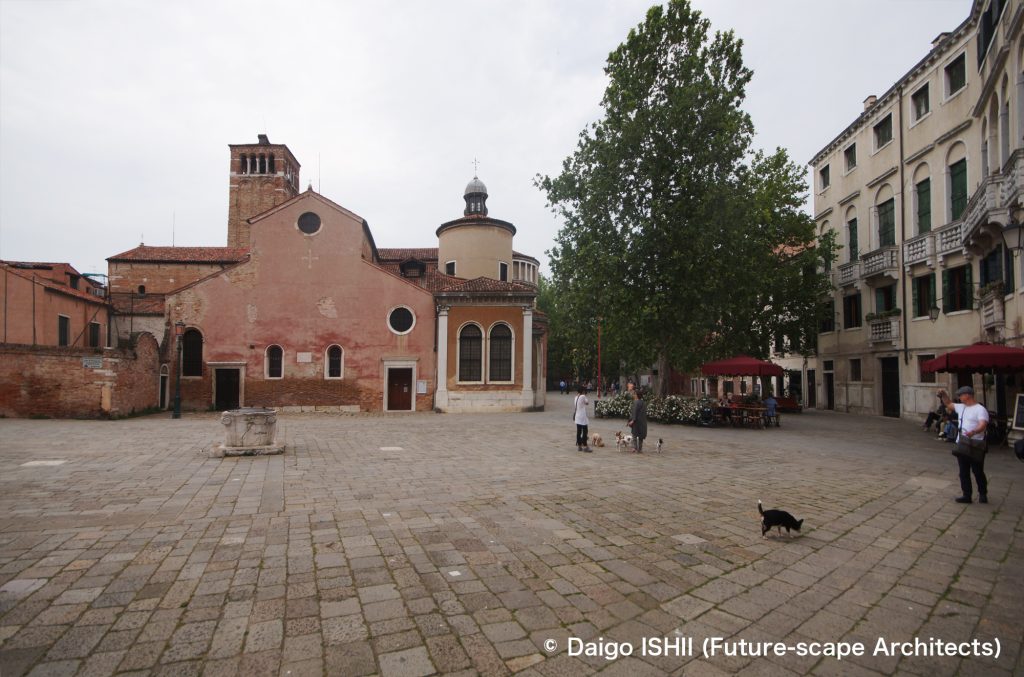
https://goo.gl/maps/31K1DzD6wop8jbyS8
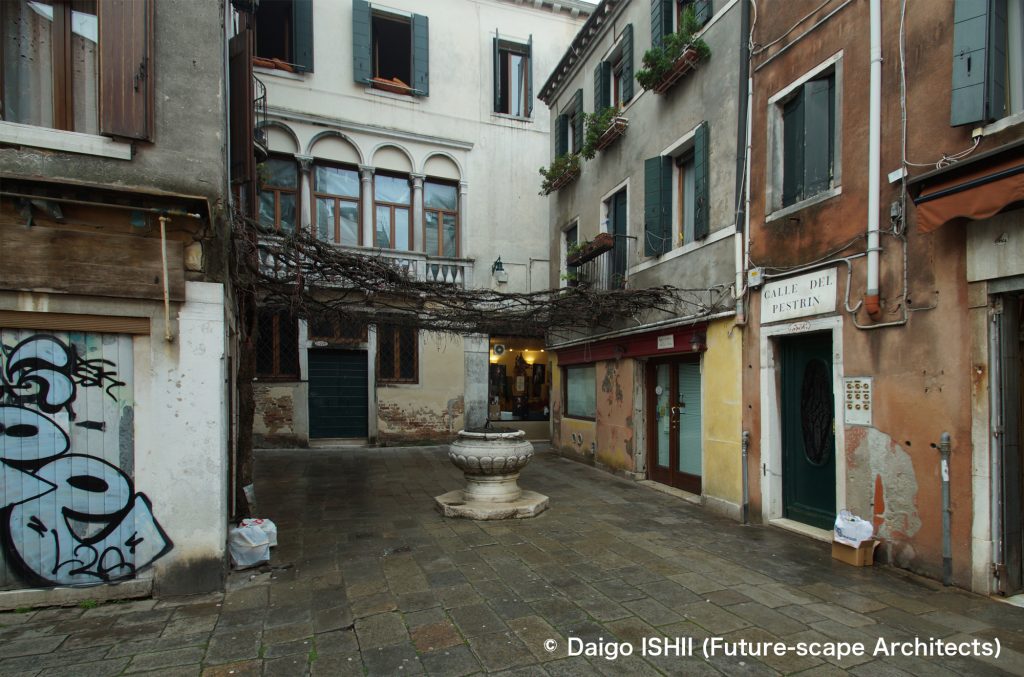
https://goo.gl/maps/dyyaABTFd5ZJVdyP6
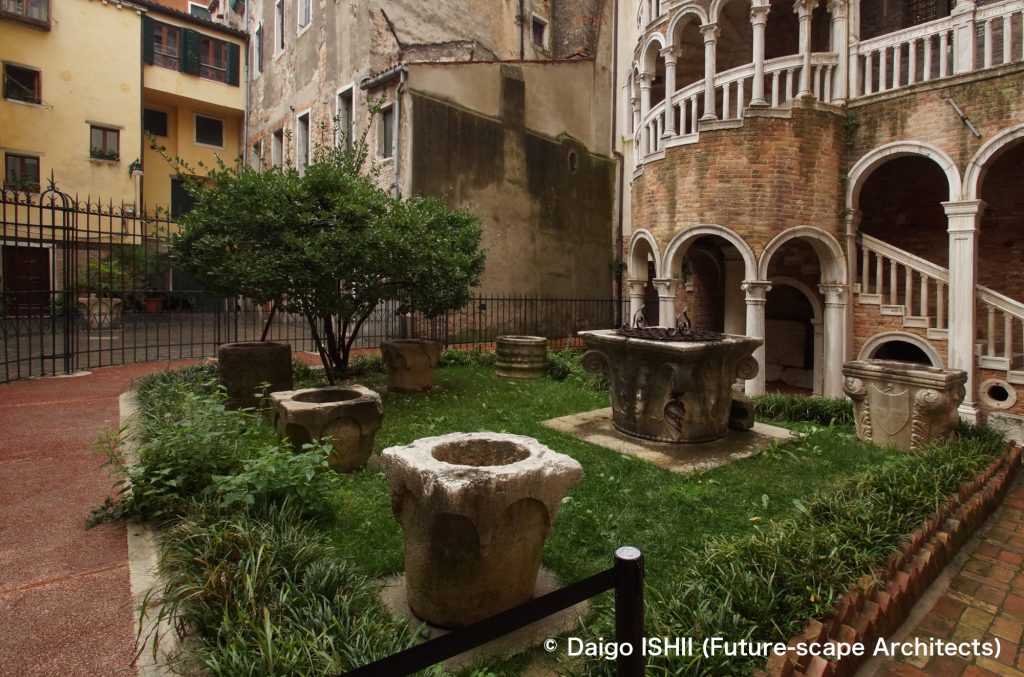
https://goo.gl/maps/a2iKgtcHPifpDWEt7
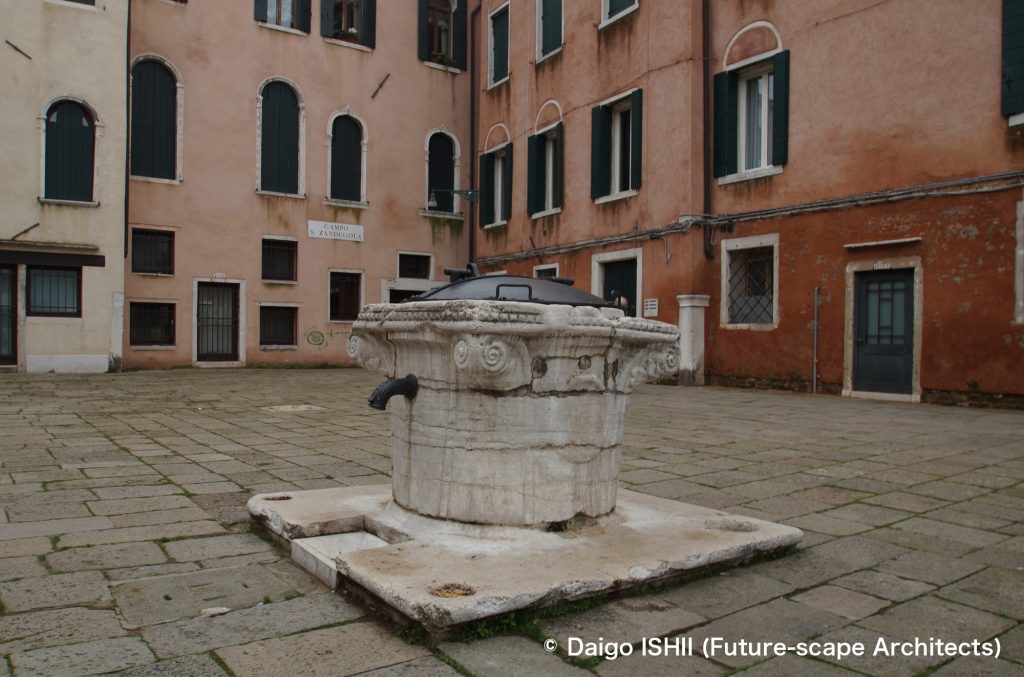
https://goo.gl/maps/aL2EWi2XSd1unCGY7
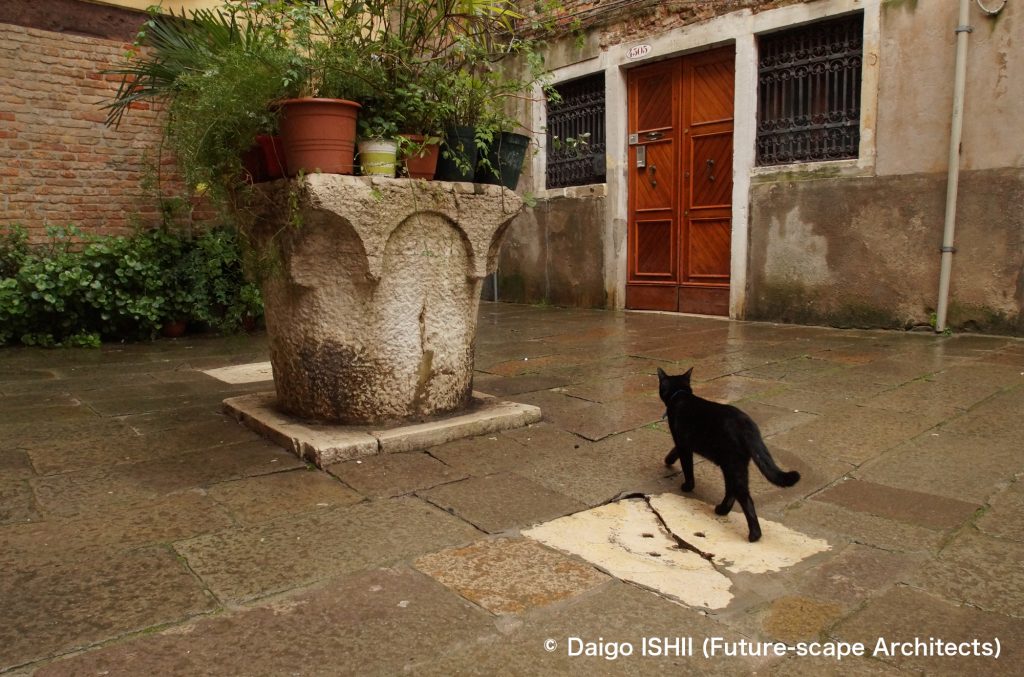
https://goo.gl/maps/a2iKgtcHPifpDWEt7
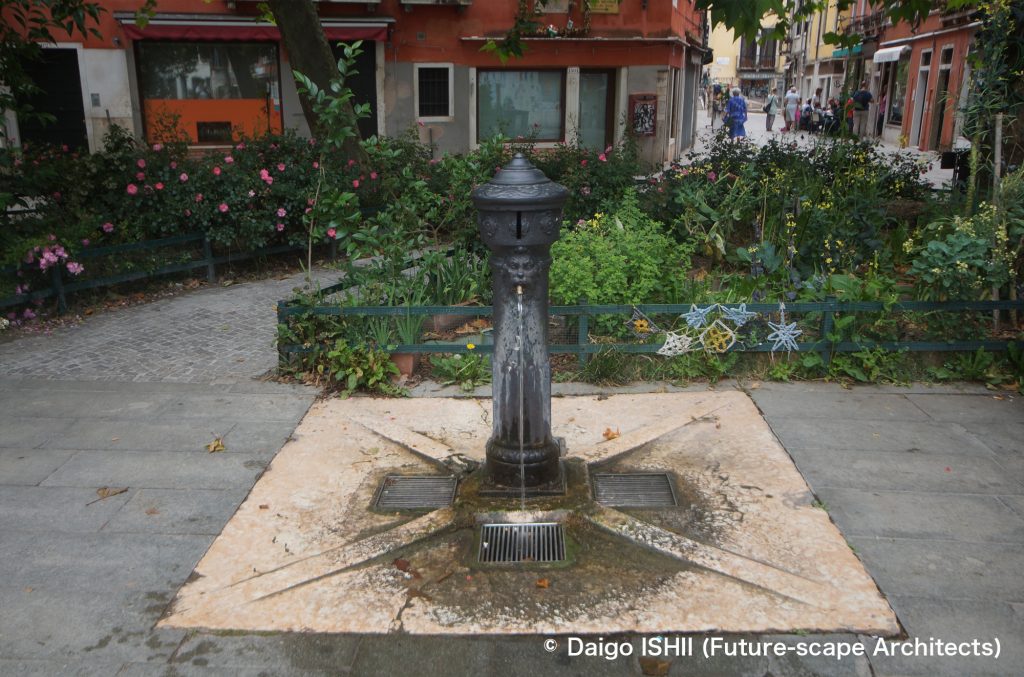
https://goo.gl/maps/31K1DzD6wop8jbyS8
Click here for your impressions
reference
Art & Architecture Venice (Marion Kaminsky, h.f.Ullman, 2005)
ヴェネツィア (「旅する21世紀」ブック 望遠郷) (ガリマール社, 同朋社出版, 1994)
Please do not use or upload our photos without permission.




